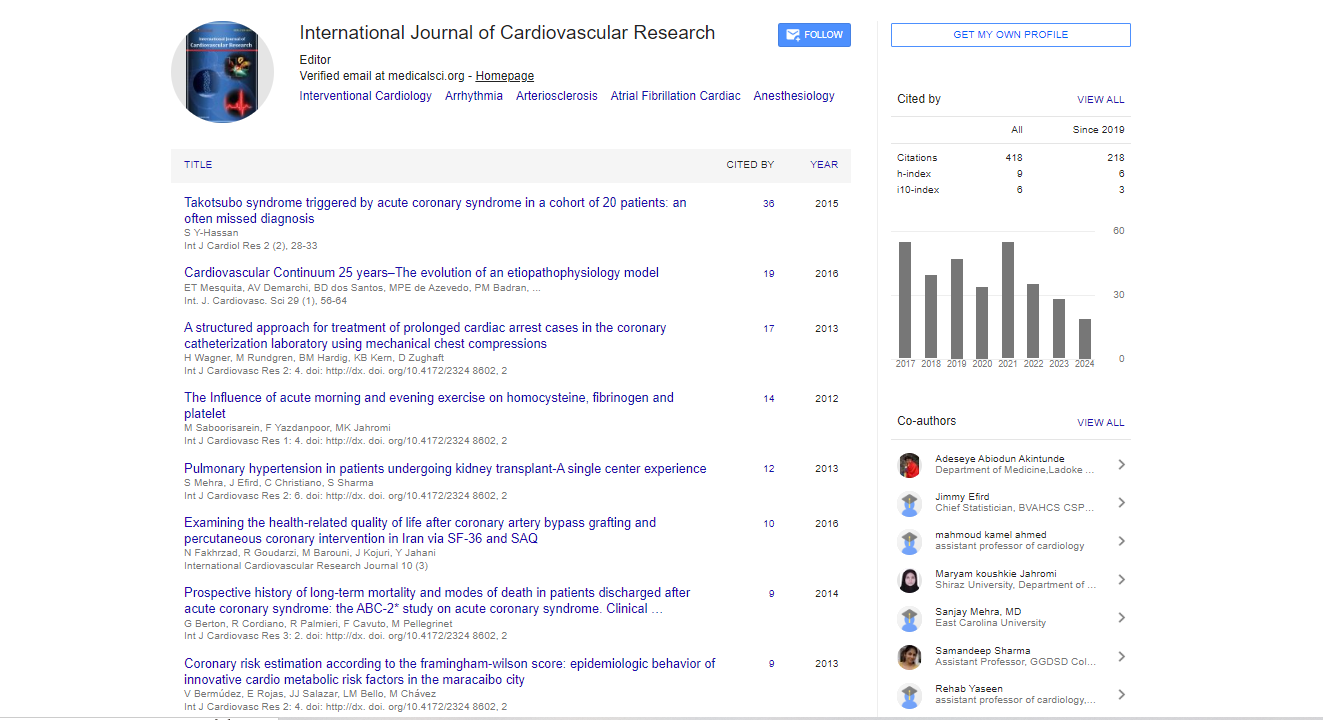Research Article, Int J Cardiovasc Res Vol: 2 Issue: 6
Implications of Hemodialysis in Patients Undergoing Coronary Artery Bypass Grafting
| Jimmy T. Efird1,2*, Wesley T. O’Neal1, Catherine A. Gouge1, Linda C. Kindell1, Whitney L. Kennedy1, Paul Bolin, Jr.3, Jason B. O’Neal4, Curtis A. Anderson1, EvelioRodriguez5, T. Bruce Ferguson1, W. Randolph Chitwood1 and Alan P. Kypson1 | |
| 1Department of Cardiovascular Sciences, East Carolina Heart Institute, 115 Heart Drive, Greenville, NC 27834, USA | |
| 2Center for Health Disparity Research, East Carolina University, USA | |
| 3Department of Internal of Medicine, Division of Nephrology and Hypertension. Brody School of Medicine, East Carolina University, Greenville, NC, USA | |
| 4Beth Israel Deaconess Medical Center, Department of Anesthesia, Critical Care, and Pain Medicine, Harvard Medical School, Boston, MA, USA | |
| 5Saint Thomas Heart Hospital, Nashville, TN, USA | |
| Corresponding author : Jimmy T. Efird Director, Epidemiology and Outcomes Research Unit, East Carolina Heart Institute, Brody School of Medicine, East Carolina University, 115 Heart Drive, Greenville, NC 27834 USA E-mail: jimmy.efird@stanfordalumni.org |
|
| Received: January 22, 2013 Accepted: March 08, 2013 Published: March 13, 2013 | |
| Citation: Efird JT, O’Neal1 WT, Gouge CA, Kindell LC, Kennedy WL, et al. (2013) Implications of Hemodialysis in Patients Undergoing Coronary Artery Bypass Grafting. Int J Cardiovasc Res 2:6. doi:10.4172/2324-8602.1000154 |
Abstract
Implications of Hemodialysis in Patients Undergoing Coronary Artery Bypass Grafting
The prevalence of chronic kidney disease (CKD) in the United States has steadily risen over the past 20 years due to the increasing number of obese individuals with diabetes and hypertension. During this period, the prevalence of CKD stages 1-4 increased by 31%. Additionally, the number of individuals with end-stage renal disease (ESRD) requiring hemodialysis (HD) has increased from 209,000 to 472,000. Patients with ESRD have a greater than 5-fold increased risk for all-cause mortality and a 3-fold increased risk for cardiovascular-related mortality.
 Spanish
Spanish  Chinese
Chinese  Russian
Russian  German
German  French
French  Japanese
Japanese  Portuguese
Portuguese  Hindi
Hindi 



